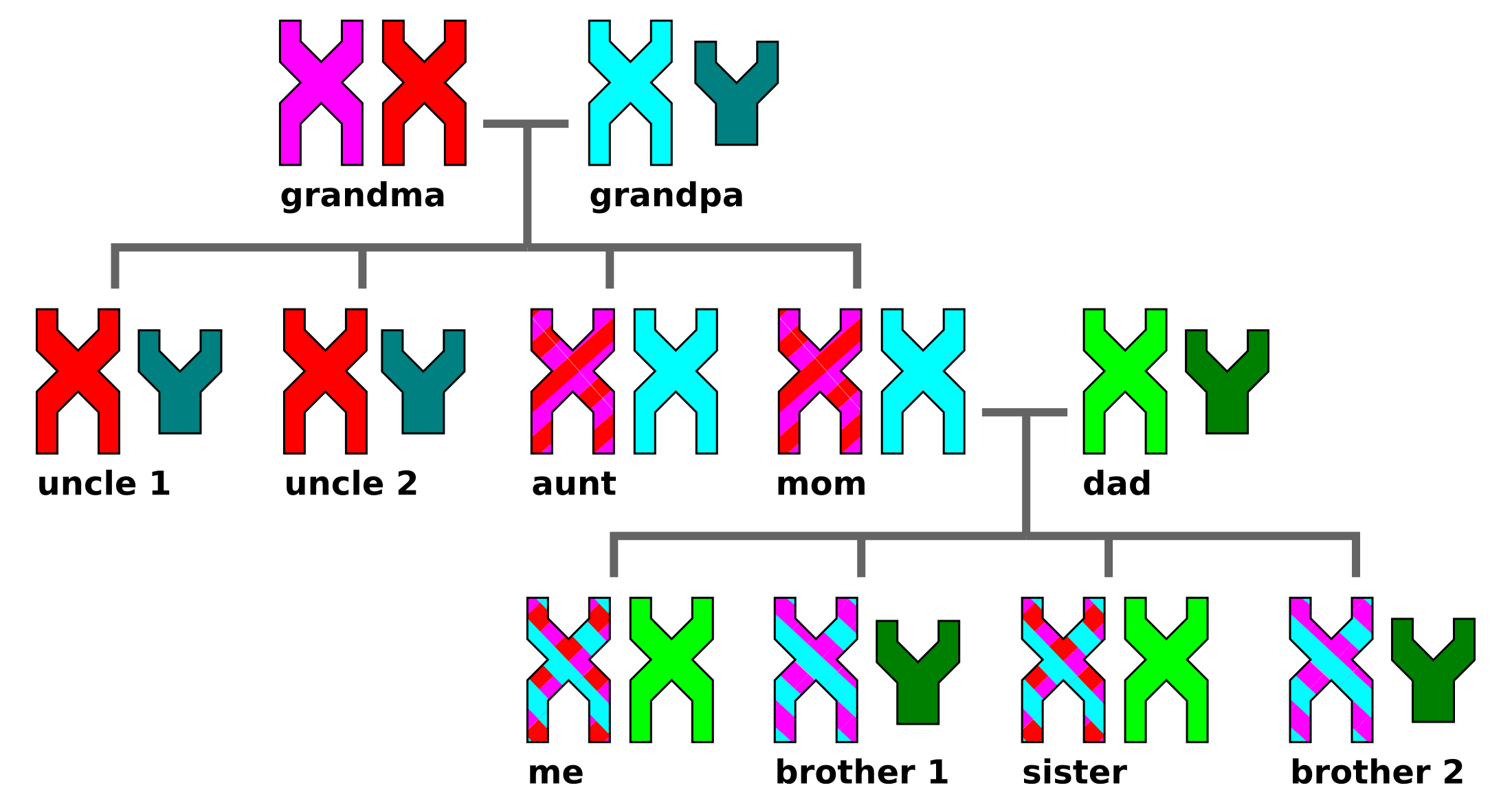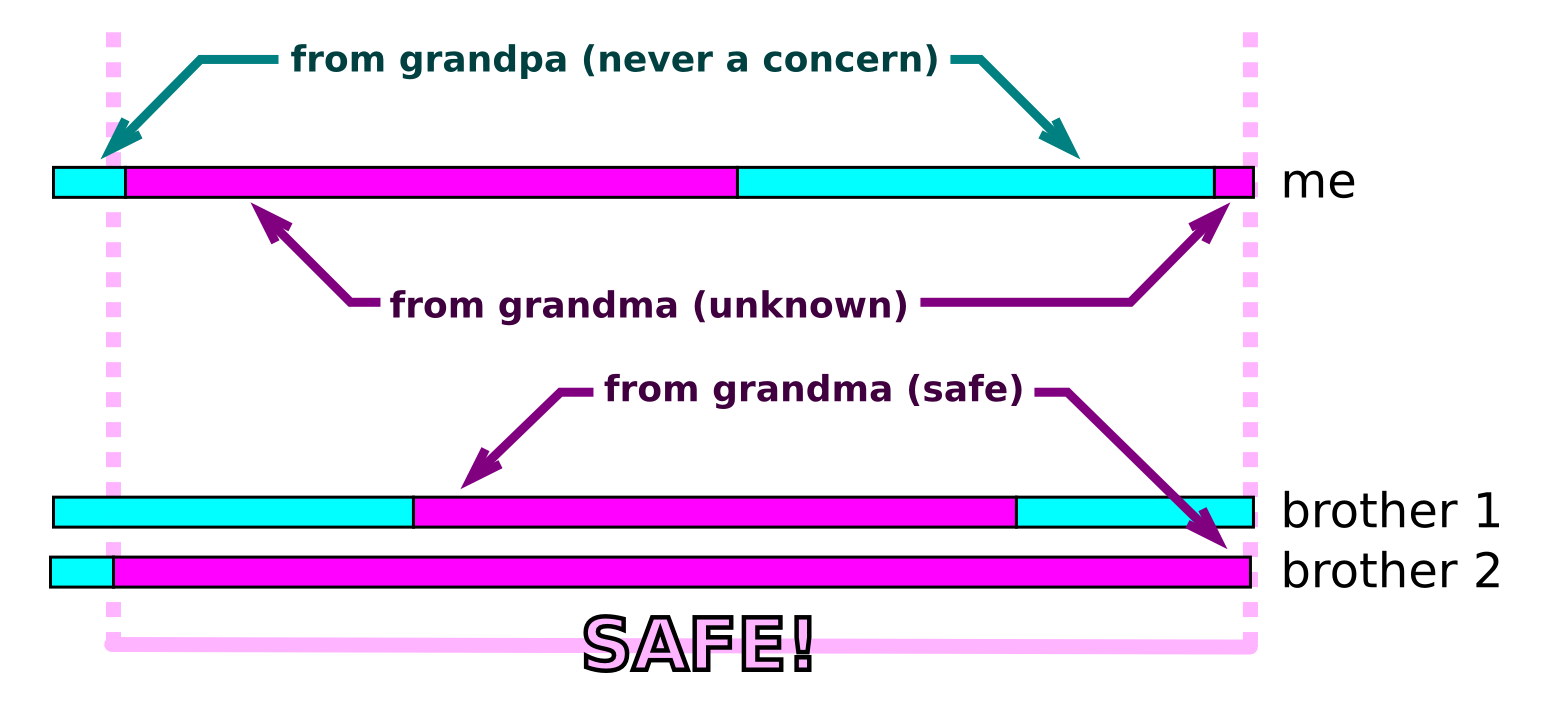Madeleine Price Ball, PhD is a PGP research scientist in George Church's lab at Harvard Medical School.
This is a personal post, my recent story of personal genomic analysis. Although I am not a PGP participant, the story is an illustration of the personal empowerment that can be realized by having access to one's own genetic data.
The personal context for this news is that I'm pregnant, and two weeks ago I found out I was carrying a boy.
Normally such news would be interesting, but neither good nor bad. In my case, however, I was really hoping for a girl – for some concrete reasons of family history. I have two uncles (my mother's brothers) with mental retardation, likely caused by an unknown mutation. If that mutation is X-linked, there's a chance I'm a carrier for that X-linked mutation. If I have a boy, there's a chance I could pass it on to him.
Assuming it is X-linked, what are my chances of being a carrier? My mother had a 50% chance of inheriting it and I had a 50% chance of inheriting one from her – a total of 25% chance (50% of 50%). However I have something in my favor that makes this chance lower: I have two brothers who are clearly unaffected. Applying this new information to a Bayesian calculation, my mother's chance of being a carrier becomes 20% and my own becomes 10%.
I would have a 5% chance of passing it on to a male child (50% of 10%). Of course, whatever they have might not be X-linked (see footnote). I estimate the chances their issue is X-linked is around 50%, which would make the risk 2-3% instead of 5%. This is small but not trivial – it's like the risk a 44-year-old woman would have for Down Syndrome in her child. It is standard to offer such an expectant mother the option to test her fetus and choose to abort it (a common decision, if controversial). I have no such option, we can't test for a mutation if we don't know what it is.
And so, when I told my mother the sex, she decided to try to have her brothers diagnosed ASAP. It's not something she wanted to do, it would be difficult – it would require discussion with their caretakers, arrangements with medical providers, and it would disrupt their routine.
I was thinking hard about what I could do myself. My mind challenged with this new stressful information, I thought of something I could have done before now but hadn't occurred to me – I could use the genetic data from my family members to determine how much “at risk” X chromosome DNA I carry.
A map of the X inheritance in my family is below (apologies to colorblind people, I believe you can read “magenta, red, and cyan” as “blue, yellow/black, and gray”):

My grandmother's X's are represented as magenta (safe) and red (mutation bearing) – my aunt and mother are represented as inheriting a red/magenta mixture from her (we don't know which they got) and a cyan X from my grandfather. My sister and I inherited (1) an X from mom that is a mixture of my grandfather's cyan X and the unknown red/magenta from my grandmother, and (2) an X from our father. My brothers inherited a single X from my mother's parents – and here I've colored it as only magenta & cyan, because any parts they got from my grandmother are proven to be “safe” by the fact that they are not affected.
Such a diagram would lead you to think that inheritance blends the DNA up pretty well each generation, but it really doesn't – in reality inheritance is extremely blocky. 23andme provides diagrams of these blocks using the “Family Inheritance” and “Family Inheritance: Advanced” tools. Because my grandfather and brothers and I have all done 23andme, I can figure out which blocks I inherited from my grandmother and compare them to what my brothers inherited. If either of them inherited the same regions, then I knew those parts were confirmed “safe”. I only have to worry about regions I inherited from my grandmother and both brothers did not inherit.
Based on 23andme, I have the following maps for the X chromosomes of myself and my brothers. What I did was perform a comparison between each of us and our grandfather (all of whom have 23andme data); any regions matching my grandfather were marked as inherited from him, any remaining regions marked as from my grandmother.

As you can see, it looks like I'm in the clear! Amazingly, brother 2 (his name is Andrew) managed to “test” a whopping 95% of the X our mother inherited from our grandmother! Thank you Andrew, excellent work! While there's 5% from our grandmother that neither brother has, I don't have it either so it's not an issue for me. Our sister does carry that segment -- some further data from my uncles would be useful for her (do they both carry that segment?), but there is no pressure to do it quickly.
Because diagnosis of my uncles was never certain, it's possible this has saved me years of uncertainty as I watched the child for signs of developmental delay. I'm extremely relieved -- and I'm really happy the "direct to consumer" genetic testing industry exists, allowing me to do this analysis. The result could easily have fallen in the other direction: if I found a larger-than-expected untested fraction from our grandmother then my risk estimates would have increased rather than disappeared. I am lucky it turned out the way it did. It's a happy ending for me, and now I can return to the mundane common concerns of pregnancy and children.
Note: this entry is adapted from a recent personal blog entry at http://www.madprime.org/.
Footnote: X-linked disorder was the major concern here. The other major possibility would be an “autosomal recessive” disorder, but the chances I would have an affected child even if I carried such a gene would be extremely low – Chris would also have to be a carrier for a mutation in the same gene (presumably an extremely rare event).
Other possibilities I could worry about carrying include Fragile X and balanced translocations. Fragile X is a string of trinucleotide repeats that can expand to a disease-causing length when passed from mother to child – I suppose it's theoretically possible one or both of my brothers and I inherited “premutation” versions and that mine could expand into “mutation” when I pass it to a child. It's also theoretically possible that my grandmother had a “balanced translocation” where a disease is caused if you only get one or the other, but not if you get both – in such a situation it's possible (but very unlikely) that my mother got both, somehow only passed zero or two to each of her children, and passed the same balanced set to me. I thought both of these were very unlikely, but I was tested for them – as I suspected, I carry neither.